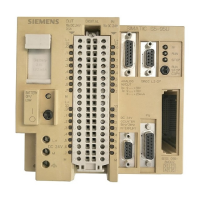Technical specifications
A.1 General specifications
S7-200 SMART
System Manual, V2.3, 07/2017, A5E03822230-AF
681
Table A- 4 Transport and storage
Environmental conditions - Transport and storage
EN 60068-2-2, Test Bb, Dry heat and
EN 60068-2-1, Test Ab, Cold
-40 °C to +70 °C
EN 60068-2-30, Test Db, Damp heat
25 °C to 55 °C, 95% humidity
EN 60068-2-14, Test Na, temperature shock
-40 °C to +70 °C, dwell time 3 hours, 2 cycles
EN 60068-2-32, Free fall 0.3 m, 5 times, product packaging
1139 to 660 h Pa (corresponding to an altitude of -1000 to 3500 m)
Table A- 5 Operating conditions
Environmental conditions - Operating
Ambient temperature range
(Inlet Air 25 mm below unit)
0 °C to 55 °C horizontal mounting
0 °C to 45 °C vertical mounting
95% non-condensing humidity
1139 to 795 hPa (corresponding to an altitude of -1000 to 2000 m)
Concentration of contaminants
S0
2
: < 0.5 ppm; H
2
S: < 0.1 ppm; RH < 60% non-condensing
EN 60068-2-14, Test Nb, temperature change
5 °C to 55 °C, 3 K /minute
EN 60068-2-27 Mechanical shock
15 g, 11 ms pulse, 6 shocks in each of 3 axis
EN 60068-2-6 Sinusoidal vibration
DIN rail mount: 3.5 mm from 5-8.4 Hz, 1G from 8.4 - 150 Hz
Table A- 6 High potential isolation test
High potential isolation test
24 V DC/ 5 V DC nominal circuits
707 V DC (type test of optical isolation boundaries)
230 V AC circuits to ground and 24 V DC / 5 V DC
2300 V AC or 3250 V DC
Ethernet port to 24 V DC / 5 V DC circuits and
1
1500 V AC (type test only)
Ethernet port isolation is designed to limit hazard during short term network faults to hazardous voltages. It does not
conform to safety requirements for routine AC line voltage isolation.
Note
The CPU models CPU C
R20s, CPU CR30s, CPU CR40s, and CPU CR60s have no
Ethernet port and do not support any functions related to the use of Ethernet
communications.

